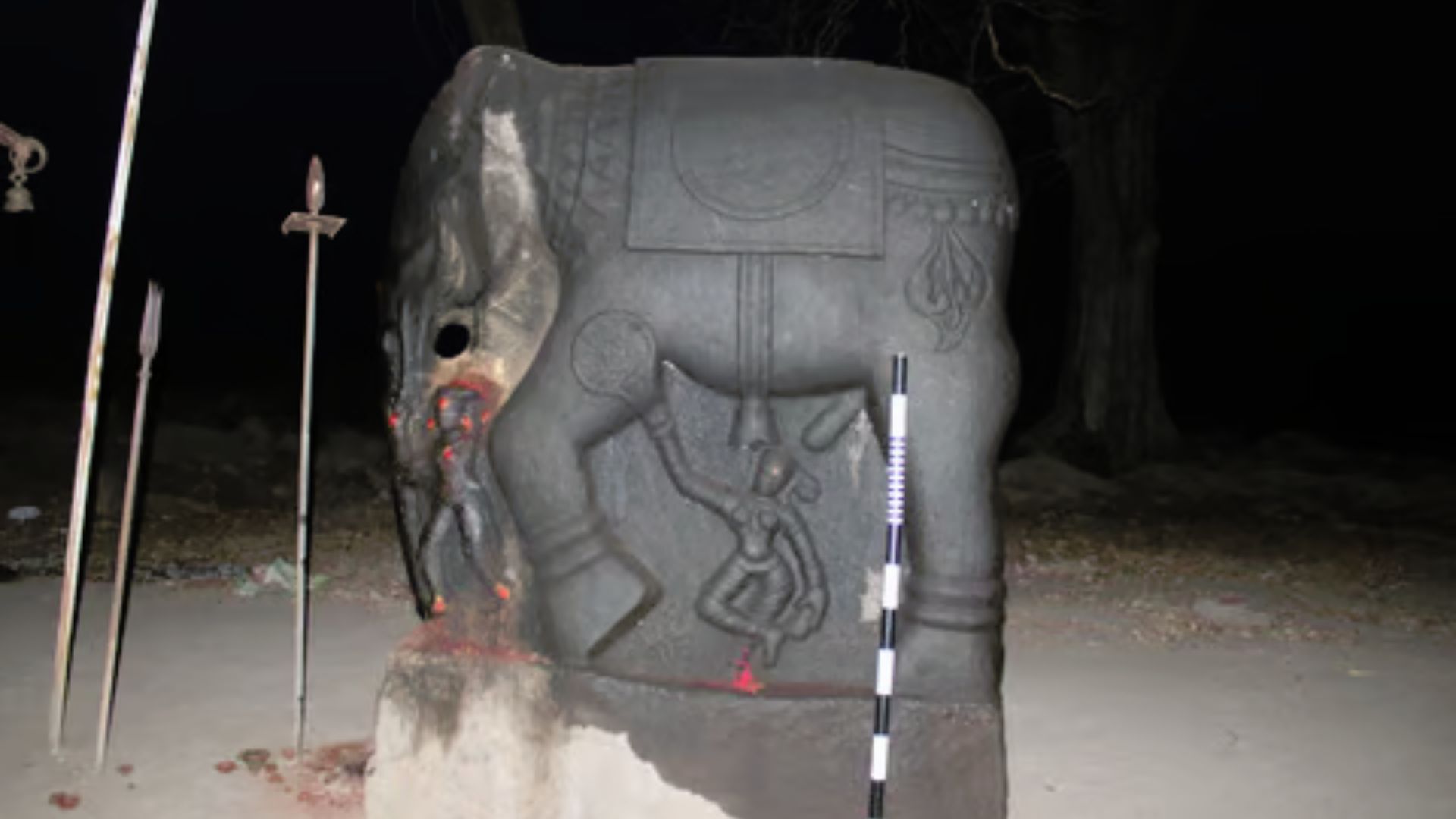


A group of archaeologists from Yakkai Heritage Trust have discovered a 13th-century memorial stone with inscriptions in Vanavareddy in Kallakurichi district of Tamil Nadu. The inscriptions outside the Vanavareddy Kali Temple, reportedly date back to the fifteenth regnal year of Kulothunga III, the Chola emperor who ruled from 1178 to 1218 CE.
The inscriptions apparently mentions the building of a temple for the seven Pidaaris by Ponparappinaan, a title that was bestowed upon the kings of the Vanagovaraiyar dynasty.
Yakkai Heritage Trust Secretary Kumaravel Ramasamy told reporters that their team, during a fieldwork, uncovered a memorial stone with inscriptions from the Kaliamman Temple and a fragmentary inscription from a nearby Aiyanar temple. He added, “These findings throw light on the establishment of a Sapthamadhar Temple, honouring the Ezhupidari.” Pidari is a Tamil Hindu deity and she is regarded to be one of the nine aspects of Shakti (Navashakti), who are the consorts of the Trimurti in local tradition. In some traditions, she is depicted to be a snake-catcher, and a consort of Lord Shiva.
The 13th-century memorial stone which has been found is attributed historically to have been made during the Vanagovaraiyar dynasty. The Vanagovaraiyar dynasty was a medieval dynasty that ruled parts of Tamil Nadu, India, during the 10th to 13th centuries CE. The dynasty was founded by Kadava Vanakandan, who was a chieftain under the Chola dynasty.
The Vanagovaraiyars established their rule in the region around Vellore and extended it to other parts of Tamil Nadu like including the present-day Salem, Perambalur, Kallakurichi, Villupuram, Tiruvannamalai, and several parts of the Cuddalore district. “Their reign marked an era of flourishing religious diversity, as evidenced by the patronage extended to Buddhism, Shaivism, Vaishnavism, and folk deities,” added Ramasamy.